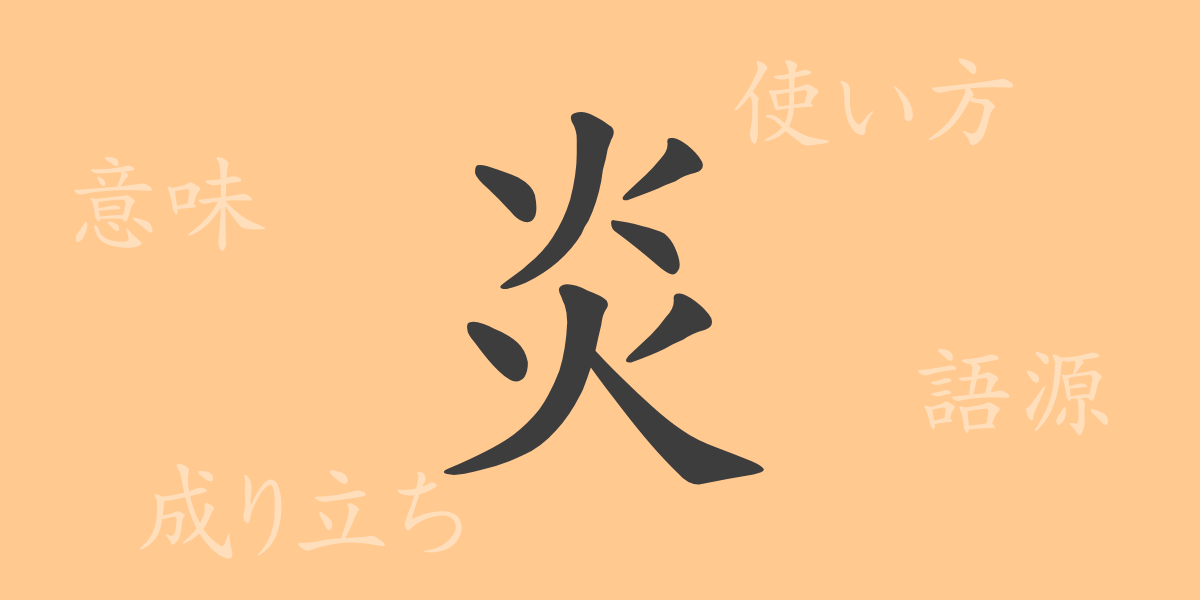“
The power of fire has held significant meaning for humanity since ancient times. Flames have been used to illuminate our lives, provide warmth, and cook food. However, while beautiful, flames are also a symbol of danger and destruction. In this article, we will focus on the Japanese common kanji “”炎”” (Honoo), delving into its full scope, from its etymology to modern usage, and even various compound words and idioms.
The Origin of 炎 (Honoo)
The kanji “”炎”” is composed of two overlapping “”火”” (Hi), representing the image of a fire burning vigorously. Created in ancient China, this character symbolizes the immense power possessed by overlapping flames. The image of a blazing fire directly evokes intense passion or strong emotions, and as such, it has been treated as a powerful presence in many cultures and languages.
The Meaning and Usage of 炎 (Honoo)
The kanji “”炎”” directly refers to the blazing appearance of a fire, but it can also be used metaphorically to indicate strong emotions such as passion or anger. Additionally, it is widely used as a suffix meaning “”inflammation”” in medical terminology, referring to a state where a part of the body is inflamed. Thus, “”炎”” is a kanji with a wide range of uses, appearing in various contexts.
Reading, Stroke Count, and Radical of 炎 (Honoo)
The kanji “”炎”” has a reading and characteristics befitting its shape and meaning.
- Reading: The on’yomi reading is “”エン”” (En), and the kun’yomi reading is “”ほのお”” (Honoo).
- Stroke Count: 炎 has a total of 8 strokes.
- Radical: The radical is 火部 (Hihen), which serves as the basis for classifying kanji related to fire.
Compound Words, Idioms, and Proverbs Using 炎 (Honoo) and Their Meanings
There are many compound words, idioms, and proverbs in Japanese that include “”炎””. Here are a few examples:
- 炎上 (Enjou): Literally, a fire burning up; also, a topic spreading widely on the internet.
- 炎症 (Enshou): Inflammation, where a part of the body becomes red, swollen, and painful.
- 愛の炎 (Ai -no- honoo): An expression representing strong love.
- 青春の炎 (Seishun- no -honoo): A metaphorical expression evoking youth and passion.
- 炎の如く (Honoo -no- goto-ku): A phrase describing something burning fiercely.
These expressions symbolize the energy and passion of flames and are used vividly in the Japanese language.
Conclusion on 炎 (Honoo)
As its shape suggests, the kanji “”炎”” symbolizes a powerfully burning fire. This single character encompasses both the warmth that sustains life and the power to destroy, and this duality continues to captivate people’s hearts. Flames are deeply rooted in our lives through culture and language, and are used daily through many compound words and idioms. As a symbol of passion and vitality, and also as a sign of caution and danger, the kanji “”炎”” is an indispensable element in our expressions.
“

























